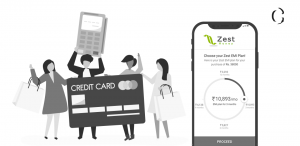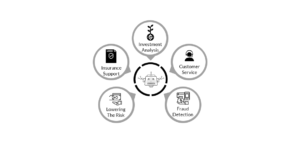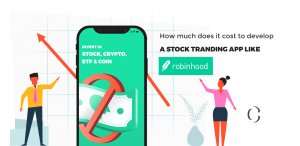P2P lending app business model: Is Peer-To-Peer lending a guaranteed way to make money?

Are you weary of obscure interest rates? Is the concern about the record highs of the stock market taking a toll on you? Are you searching for a simple way to diversify your portfolio into some great investment option to achieve solid returns?
If yes, then peer-to-peer lending may be an investment approach that deserves contemplation.
What is Peer-to-Peer Lending?
Peer-to-peer lending enables you to lend money instantly to borrowers. It dramatically cuts out the broker, the bank or lending organization.
Lenders or individual investors and borrowers generally smaller organizations or individuals connect with each other online via a P2P lending company or platform.
For borrowers, P2P lending grants numerous advantages over conventional lending practices:
- competing interest rates
- insignificant paperwork
- faster judgments for approval
This comparatively new market is advancing swiftly. PriceWaterhouseCoopers predicts the P2P lending market could equal $150 Billion by 2025.
Loan-based crowdfunding or as we call it peer-to-peer (P2P) lending, has been evolving as a disruptive force in the lending market in recent years. The major markets for the crowdfunding industry are the U.S., U.K., Europe, and China.
Let us check out P2P business models, different perspectives of risks and possible risk management chances for the loan-based crowdfunding industry to adopt, concluding with indications for banks.
P2P lending app business model
⇒ Crowdfunding Business Models
According to the International Organization of Securities Commissions (IOSCO), the two overarching business models for P2P lending are the notary model and the client-segregated account model.
⇒ Notary model
This is a P2P lending business model where the borrower visits the online platform and presents the completed application form for a loan. The borrower’s risk profile is investigated using the loan-issuing bank’s underwriting guidelines. The application is approved after checking the risk involved. The borrower’s loan specifications are ordinarily posted on the platform’s website for investors to study and fund.
Once enough investor commitments are received the loan amount is transferred to the borrower. Once the loan is disbursed, the things proceed from investors are used by the borrower to obtain the loan from the issuing bank.
Investors who fortunately bid the loan are technically circulated a note by the platform for their benefit of the contribution. The notary model displaces the risk of loan nonpayment away from the issuing bank to the investors themselves.
⇒ Client-Segregated Account Model
In this business model, a contract is settled with the help of a mediator platform by pairing the particular lender and the borrower. Lenders provide their funds to individuals or businesses in one of the following ways.
- Automatic lending based on the platform’s arbitrary allocation process
- Manual requests for allocation based on the lender’s decision
This model is different from the notary model as the issuing bank is not involved. The funds are transferred directly between the lender and the borrower.
The P2P platform allows funds from lenders and borrowers to be distributed from an intermediary’s balance sheet and resisted through a legally separated customer account. The intermediary doesn’t have any claim on the funds in the event of the platform’s failure.
There is a third business model which is widely practiced in China. It is called the Guaranteed Return model. Here lenders anticipate a fixed rate of interest on the loaned amount. According to the market reports, investor enthusiasm to follow this model is huge but it is less in demand from the borrower.
So how do P2P lending platforms make revenue?
The most important selling point for P2P lending platforms is their transparency. The levels of hierarchy, heaps of paperwork, the hidden and hard to understand fees and payment schedules in the banks have been the subject of distress in recent years. From the beginning of P2P lending, the most coveted features have been its simplicity and transparency. So, looking at all this, the P2P platforms have a page devoted to the fees they charge and even go so far as to describe in easy words how they are making money!
Every platform has a somewhat different fee structure than the other. Let’s discuss the different types of fees that P2P platforms charge and how can you earn with our P2P white label solutions!
Peer-to-peer lender’s fee structure:
⇒ Fees charged from borrowers
Most platforms are moving away from the fee model that targeted both lenders and borrowers. Instead, they are charging both lenders and borrowers. For example, the platform Landbay has two fee charges for borrowers:1. The borrowers are charged with an upfront fee ranging from 2% to 2.5%. This fee includes the cost of screening profiles and the establishment of a new loan. 2. The second fee is 0.5% to 1.00% margin (per year) on the loan principal outstanding.
⇒ Fees charged from borrowers and investors both
Another P2P platform Proplend is a platform that charges fees from both borrowers and investors.
Borrowers ought to pay a Listing Fee and a Completion fee. Also, mortgages are secured against property. And hence, the legal and valuation fee incited in establishing a loan is also borne by the borrower.
P2P investors need to pay a fee equivalent to 10% of interest collected.
The P2P platforms can also collect fees if they provide some API to others interested in using the platform.
Conclusion
As a P2P lending platform, you can charge various fees for the services that you provide. You can provide investors a chance to earn arguably the most approving interest rates granted on the alternative investment market. And the borrowers can be offered means to borrow money without the hassle of conventional banks.
With our customized white label solutions, we can provide you guidance for the best suitable business model for your P2P lending platform and means to generate more revenue. We can also provide you a platform with the latest technology and extraordinary features. Using our white label solutions you can even provide API to the clients that are interested to provide their services through your platform.
Connect with us to discuss in detail how to make more money with our P2P lending platform.









